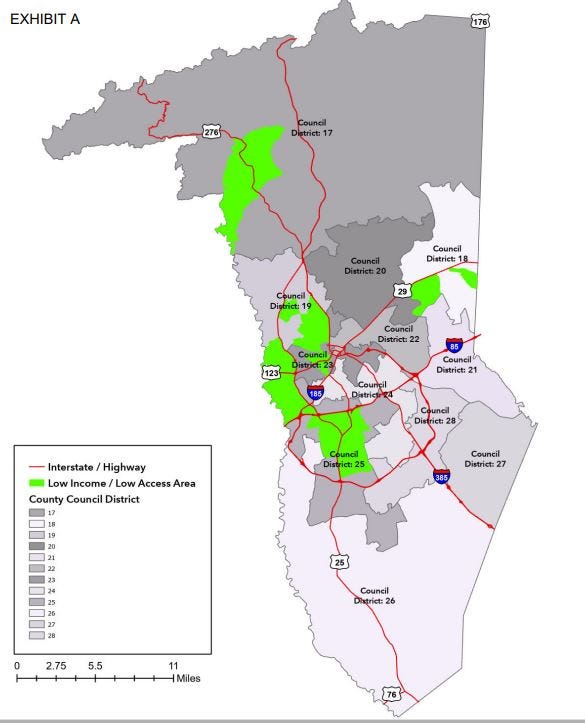Defined by South Carolina DHEC as “geographic areas where access to healthy food options, especially fruits and vegetables, are limited or nonexistent because of an absence of healthy food retail, such as farmers’ market or a grocery store,” said Greenville County Councilman Ennis Fant, who represents District 25, who introduced a resolution Tuesday night to help alleviate this problem.
“Food deserts are not a race issue, they are an economic one and they affect everybody in every portion of the county,” Fant said.
Fant’s resolution, which was sent to the finance committee by chairman Dan Tripp, would allow Greenville County to give incentives to sponsors looking to bring grocery stores to underserved areas, which are defined as a census tract designated as low-income and low access.
Similar to how Greenville County grants Fee in Lieu of Taxes (FILOTs) to attract businesses, the county could do several things to attract grocery stores if this resolution were to pass, including reduced land disturbance permitting fees, grant programs for financial assistance or allowing companies to pay a certain fee instead of property taxes.
Spartanburg’s Piggly Wiggly closure affected Greenville as well
Fant also said that there had been efforts to bring Piggly Wiggly to Greenville County, efforts that were proceeding well until the store located in Spartanburg closed.
In Spartanburg, aggressive efforts were used to bring a Piggly Wiggly to the city, which alleviated a food desert in the area. When it shuttered its doors, many residents were devastated.
“I think everybody involved is disappointed at this news and that outcome. The city and other community partners were aggressive in putting together a strategy to alleviate the food desert, and that’s the strategy that resulted in the Piggly Wiggly,” City Manager Chris Story said. “I don’t know what the future holds as it relates to that.”
Story said the city was told the closure was due to low sales and customer count, as previously reported by the Spartanburg-Herald Journal.
“It’s not just a Greenville problem,” Fant said, referring to the issues of food deserts. “It’s also a statewide and national problem.”
As a ripple effect, Wendell Jones, who represents District 25 in the SC Statehouse, mentioned he would also be putting out legislation to help food deserts throughout the state. According to a Facebook post, the bill would provide grocery stores with tax incentives and a break on sales tax for the first two years.
Fant said as he’s discussed his resolution, he’s received good feedback from local nonprofits, including Loaves & Fishes and LiveWell Greenville.
Where are Greenville County’s food deserts?
In Fant’s resolution, he also provided a visual for where Greenville County’s food deserts exist.

Food deserts appear in districts 17, 18, 19 and 25. According to USDA, food deserts typically appear in places with smaller populations, higher rates of abandoned or vacant homes or places with lower incomes and higher unemployment.
Savannah Moss covers Greenville County politics and growth/development. Reach her at smoss@gannett.com or follow her on X @Savmoss.
This article originally appeared on Greenville News: County considering incentives to draw in grocery stores to food deserts
